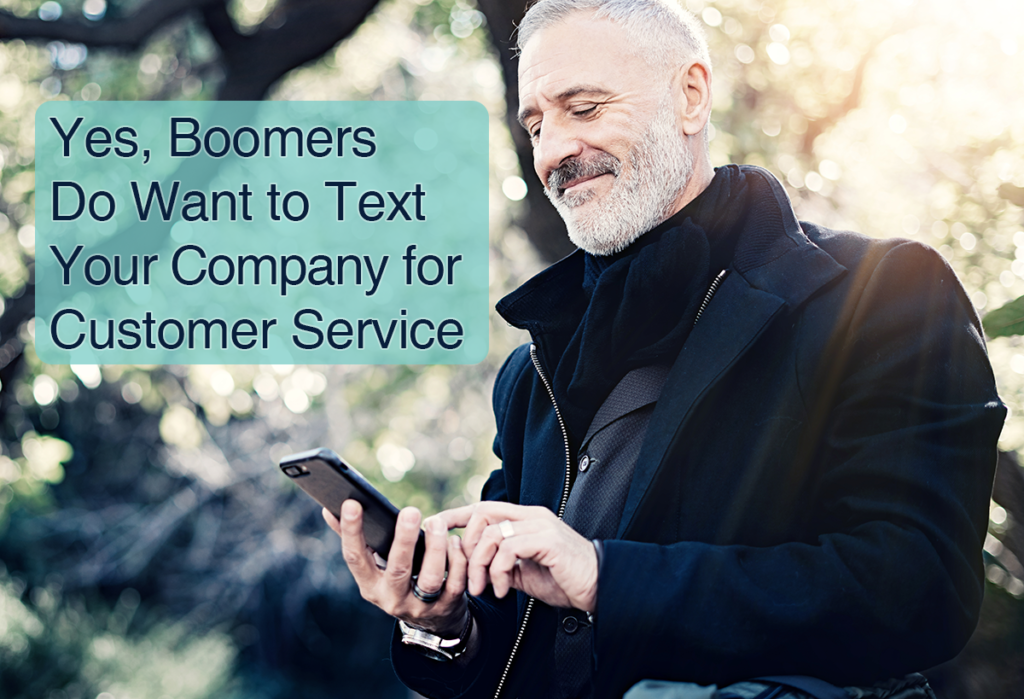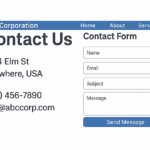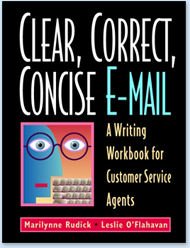
If your company is gearing up to offer customer service via text, that’s great! Your customers are going to love the convenience. Texting is their go-to channel for personal communication, and they’re eager use it to contact companies when they have questions or need help.
But as you plan your roll out of texting for customer service, beware of a common trap: Don’t anticipate that your younger customers will love texting you and your older customers won’t. While texting behaviors do differ slightly by the age of the person holding the smartphone, customers of all ages will use text for customer service if you make the channel easy to use. If you assume your older customers aren’t into texting, you’re mistaken.
Like Everyone Else, Boomers Use Smartphones for Texting
Younger people in the workplace sometimes assume that older people don’t text very much, but there’s an avalanche of research that proves this isn’t true. If we just focus on recent research findings, there’s plenty of evidence that older people do text … a lot!
In 2015, Pew Research Center reported that 92% of smartphone owners age 50+ used text messaging at least once during the survey period. By comparison, 98% of smartphone owners age 30 – 49 used text messaging, and 100% of smartphone owners age 18 – 29 used it. So yes, younger people are more avid, but these figures show why we shouldn’t exaggerate how much age affects a person’s texting habits.
Just like their younger counterparts, older people are texting more and using other communication channels less. AARP research shows that among people 50 to 59, text messaging has overtaken email as the tool most used to stay connected.
Experian research also shows that when it comes to texting, the generations are a bit different, but not strikingly different. By age, there was almost no meaningful difference in the percentage of smartphone owners who texted during a typical week: 91% of Millennials, 92% of Generation X, 92% of Boomers, and 94% of the Silent Generation. The study did show that the generations differ far more on how much time they spent with social networking: 74% of Millennials spent time this way compared to only 58% of the Silent Generation.
The Culture of Texting Is Different for Older Customers and Younger Customers
It’s true that younger people use their smartphones more, and for more purposes, than older users. It’s also true that there are striking cultural differences between the generations, and some of these differences show up in how people text. Younger people are more likely to start, and end, romantic relationships via text. They may receive a job offer via text, and they may consider, for just a moment, turning it down via text (bad idea). A younger person, who’s downstairs, may be more likely to text her spouse, who’s upstairs, to ask what he wants for dinner. For younger people, texting could be called a lifestyle. For older people, it may just be one way to use a communication device.
But when it comes to using text for customer service, these cultural differences between younger and older people do not matter much. If it boils down to younger people being “very likely” to use text and older people being merely “quite likely,” companies should be encouraged. If you build it, they will come. If you do provide customer service via text, most of your customers, including the older ones, will gladly use it.
Make the Experience of Texting for Customer Service Great for All Your Customers
Rather than dismissing your older customers as uninterested in texting you—or hyperfocusing on your younger customers as only interested in texting you—invest your effort in giving all your customers a great experience when they text you for service.
- Be like ESPN and allow your customers to contact you via mobile app when they are experiencing issues or have questions about their account: “Hi – I have a question about creating a Fantasy League, can you help?” “Of course! What is your question?”
- Be like Lyft and allow your customers to text you post-ride with questions and issues: “Hey, I was overcharged for my ride twenty minutes ago from SoHo to Madison Square Park. Can you help?” “Hi Jessica! Sure, no problem. Let me take a look at your ride history.”
- Be like Verizon and use two-way text messaging to notify your existing customers that it is time to renew a plan or purchase an accessory for their phone and allow them to respond: “Hi Jessica, you are eligible for an upgrade! Would you like to purchase the iPhone 7?” “Wow that went by quickly! How much does the 7 cost?”
- Be like Winc, an online wine creator and curator, and allow your customers to text in questions directly from your Instagram page: “Hey…I’m on your Insta and was wondering how sweet the bottle of Chardonnay that you just posted is?” “Hello there! Thanks for visiting our Instagram page! Our latest post is a sweeter Chardonnay with pear and apple flavors.”
- Be like PupJoy, a dog-subscription box service, and have new customers text in promo codes: “PupJoy” “Enter code “HappyTails” at checkout for $15 off any PupJoy subscription box plan at www.pupjoy.com”
Using text to connect with older customers is just good common sense. While it’s true that we each know that one older neighbor, friend, or relative who doesn’t use text at all or very well, we know many more older people who text all the time. While they may not live in their smartphones the way younger people do, your boomer customers want to text you, and you should start making that happen right away.
This post originally appeared as a white paper at the Teckst website. Teckst is a messaging and innovation company developing products that build conversational relationships between brands and consumers.







0 Comments